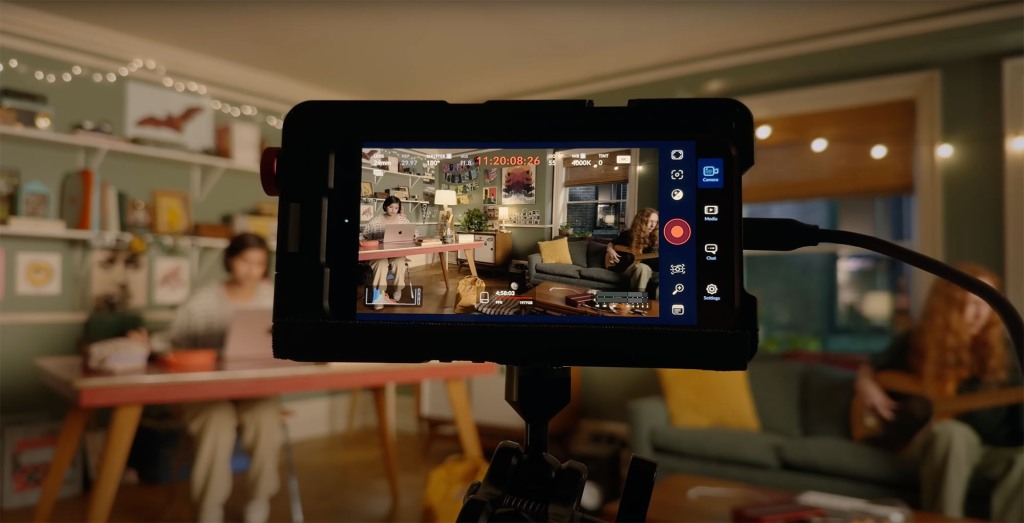
Thanks to Apple’s recent “Scary Fast” event and the subsequent BTS video revealing that the content was shot with an iPhone, friends and I have had conversations about game-changing technology. The knee jerk response of fanboys any time a high profile filmmaker does anything using an iPhone is what a gamer changer it will be to produce an entire feature film using an iPhone. While I don’t doubt that will eventually happen, analysis of Apple’s BTS video makes it clear that an awful lot went into overcoming the limitations inherent in the iPhone camera system. But this isn’t the first time the term “game changer” has been applied to new and interesting technologies.
Over the years, many technologies for production and post have been viewed as game changers. Think of things like 3D stereoscopic films, VR/AR glasses, the Lytro light-field camera, and others. In nearly all cases, the impact – when it did actually materialize – changed an element in the process, but not the workflow. For example, in the transition from photochemical film processes to video/digital, the film workflow components (labs, negative cutting, color timing, etc) were simply replaced by their electronic equivalents (DITs, conforming/finishing, digital grading, etc).
When the RED Digital Camera Company brought the RED One to market, it was by no means the first nor only digital “film” camera. While RED One did expand the boundaries of resolution from HD to 4K and beyond, the company did not end up “owning” the digital acquisition market. This eventually fell to ARRI. Although later to market, the Alexa has become the gold standard for most filmmakers. Sure, a lot of films are shot with RED and Sony cameras, but it’s ARRI Alexas that dominate the top tier of films.
There are many reasons for ARRI over RED, in spite of the fact that on paper RED’s cameras might seem better. Many it’s because RED cameras originally required non-standard support gear, or because the film community may have been turned off by RED founder Jim Jannard’s bravado. While these might all be factors, what’s more likely the case is that the ARRI company, Arriflex cameras, and ARRI lighting and support gear have been a filmmaking staple for a century. Plus, with high budget film and video projects, cameras and production gear are generally rented. The cost of a camera is a small percentage of the total budget. Going back to the the original premise, there is little advantage from a budget standpoint to using an iPhone – aside from the novelty of doing so.
Let’s look at post. Certainly nonlinear digital editing has had a majoring impact. But it hasn’t really changed the processes involved. For instance, branched stories – an idea that some thought NLEs would encourage – have only had limited success. Netflix’s “Black Mirror: Bandersnatch” is really the only such mainstream film that comes to mind. Avid Media Composer has become the dominant feature film/broadcast TV NLE, in spite of not being the only option at the start. Granted, this is a niche market with a small number of users compared with social media influencers and others working with different brands of editing software.
In spite of challengers, Avid Media Composer is still here. Apple looked promising in the Final Cut Pro “legacy” days, when prominent users like Walter Murch, Angus Wall, and Kirk Baxter cut several high profile feature films with it. Yet even with all that buzz, FCP didn’t make a significant dent in the number of Media Composer seats in Hollywood. Fast forward to the mangled launch of Final Cut Pro X over a decade ago. That put a nail into FCP’s coffin for Hollywood. What Apple promoted as a gamer changer – and Final Cut Pro (formerly X) does offer unique and innovative features – turned out to be a big “whatever” for film editors. Even though some film editors adopted the new Final Cut Pro, Adobe has been able to capitalize on the former FCP “legacy” editors, but Avid is still king in Hollywood.
There are many factors involved. A big one is that experienced editors know the software inside and out and many have decades of experience in its operation. It doesn’t matter if something else is faster or more efficient. If the software you use is second nature, then a few extra keystrokes simply melt away thanks to muscle memory. Another factor is that, like camera gear, post gear is rented by the project and/or supplied by known post facilities with an existing investment in Avid-centric systems. Those companies want to recoup their investment, rather than pursue something that might be trendy for a short period of time.
It’s also worth noting that Media Composer is the sibling of Pro Tools, which is the dominant audio software used in film and TV post. There’s a certain synergy to having the picture and sound cutting/mixing tools come from the same manufacturer. Finally, as a piece of software, Media Composer (owned or subscription) is dirt cheap compared with the computers and storage used to run it. In spite of ongoing financial issues, Avid survives because of the “if it ain’t broke, don’t fix it” mentality. I really don’t see the newest challengers, like Blackmagic Design DaVinci Resolve and Adobe Premiere Pro, doing much to change that outside of a few editors.
The moral of the story is that the next time you hear something pronounced as a game changer, be skeptical. Few things are truly that. A product can bend production and post workflows, but very few completely upend or revolutionize how traditional film and TV content is produced, posted, and distributed. In 2024, I’m sure plenty of AI-related tools will be touted as revolutionary, game changing, or something similar. Before you get too excited, take breath and think about whether it will truly change how you work. Or better yet, should it?
©2024 Oliver Peters